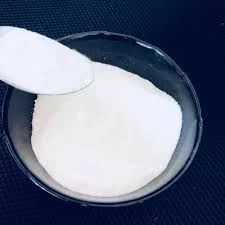
Nov . 15, 2024 22:08 Back to list
mortar adhesive additive
Exploring the Benefits of Mortar Adhesive Additives
In the world of construction and renovation, the quality of materials used can significantly impact the durability and performance of structures. One such material that has seen enhanced formulations in recent years is mortar. Mortar adhesive additives play a crucial role in improving the properties of traditional mortar, making it more suitable for various applications.
Understanding Mortar and Its Uses
Mortar is a mixture of lime, sand, water, and cement, commonly used to bind building materials like bricks, stones, and concrete blocks. Its primary function is to act as a glue that holds the materials together while providing sufficient flexibility to accommodate movements in the structure. The development of mortar adhesive additives has revolutionized this traditional mixture by introducing additional properties such as increased adhesion, flexibility, water resistance, and longevity.
The Role of Additives in Mortar
Additives are substances added to mortar to enhance its performance and workability. Mortar adhesive additives can be categorized into several types, including polymer-based additives, air-entraining agents, and pozzolanic materials. Each type serves a unique purpose and can modify the characteristics of the mortar mix.
1. Polymer-Based Additives These are among the most common additives used to improve adhesion. They create a strong bond between the mortar and the substrate, enhancing the overall strength of the construction. Polymer additives also improve the elasticity of the mortar, making it less susceptible to cracking. This is particularly beneficial in areas with extreme temperature fluctuations, where materials expand and contract.
2. Air-Entraining Agents Air-entraining additives introduce microscopic air bubbles into the mortar mix. This not only improves the workability of the mortar but also enhances its resistance to freeze-thaw cycles. The air pockets act as shock absorbers, preventing damage when water infiltrates the mortar and freezes, thereby extending the lifespan of the structure.
3. Pozzolanic Materials These natural or artificial materials, such as fly ash or silica fume, can be mixed with mortar to enhance its strength and durability. Pozzolanic materials react with lime in the presence of water to form additional cementitious compounds, resulting in a denser and more robust final product. This makes the mortar less permeable and helps protect against moisture-related issues.
mortar adhesive additive

Benefits of Using Mortar Adhesive Additives
The introduction of mortar adhesive additives brings several advantages to construction and renovation projects
1. Enhanced Adhesion Mortar with adhesive additives adheres strongly to various substrates, ensuring a secure bond that minimizes the risk of dislodging over time.
2. Increased Flexibility The flexibility provided by polymer additives makes the mortar more resilient to movements in the building, such as settling and thermal expansion.
3. Improved Workability Additives can make the mortar easier to spread and manipulate, allowing for a more straightforward application process that can save time and labor costs.
4. Longer Lifespan The enhanced durability and water resistance of mortar with additives contribute to the longevity of structures, reducing the need for frequent repairs or replacements.
5. Versatility Mortar with adhesive additives can be used in various applications, including tile installation, stone masonry, and thin-set applications, making it an excellent choice for diverse construction needs.
Conclusion
The innovation of mortar adhesive additives has transformed the construction industry, making it possible to produce high-quality, durable, and versatile mortar. By incorporating these additives, builders and contractors can ensure that their projects not only meet immediate aesthetic and structural requirements but also stand the test of time. As construction practices continue to evolve, the use of mortar adhesive additives will undoubtedly play a pivotal role in the development of more resilient and sustainable structures.
-
Versatile Hpmc Uses in Different Industries
NewsJun.19,2025
-
Redispersible Powder's Role in Enhancing Durability of Construction Products
NewsJun.19,2025
-
Hydroxyethyl Cellulose Applications Driving Green Industrial Processes
NewsJun.19,2025
-
Exploring Different Redispersible Polymer Powder
NewsJun.19,2025
-
Choosing the Right Mortar Bonding Agent
NewsJun.19,2025
-
Applications and Significance of China Hpmc in Modern Industries
NewsJun.19,2025







